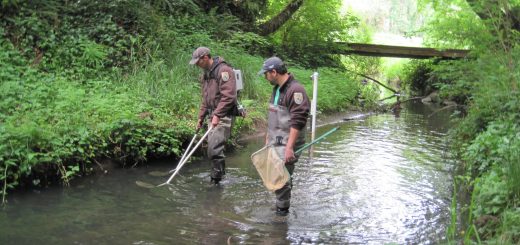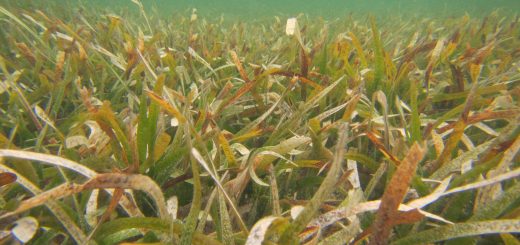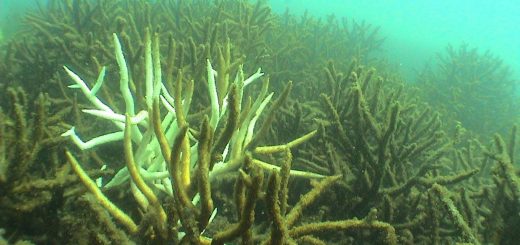The effects of climate change differ by habitat type for channel catfish
Climate change is increasing water temperatures around the world, and while many studies have addressed the impacts of warming water on species such as trout and salmon, much less is known about warm-water species. Dr. Jonathan Spurgeon and colleagues at the University of Arkansas, University of Nebraska-Lincoln, and the Nebraska Cooperature Research Unit set up a study in the Midwestern United States to find out.
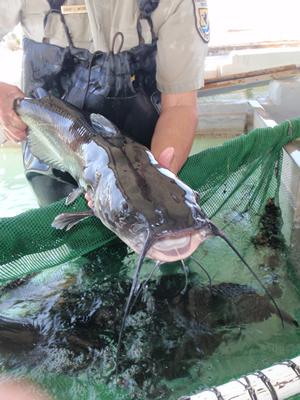
Dr. Spurgeon assessed the effect of climate change on the growth rates of channel catfish (Ictalurus punctatus) in waters all across Nebraska over the course of 18 years (Spurgeon et al. 2020). Fish are ectotherms, which mean that their metabolic rates are governed by the temperature of their environment: as temperature increases, so does their growth rate (as long as there is enough food). Channel catfish are common throughout North America and can tolerate a wide range of temperatures. Dr. Spurgeon and colleagues collected climate data from a publicly available database (http://prism.oregonstate.edu). They also captured catfish and snipped a spine from their pectoral fin to determine each fish’s growth rate. In cross section, the spines resemble tree rings, and age and growth can be estimated in much the same way as with trees.
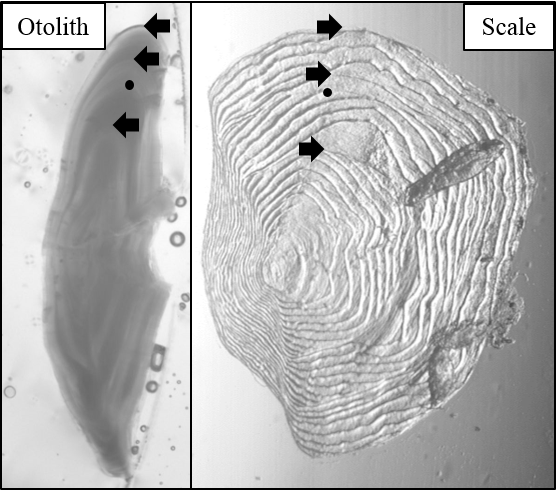
Figure 2. Example of the growth rings from other hard body parts of fish, including an otolith (ear bone) and scale. Arrows are annuli, or the rings that are counted, and the dot represents a false annulus. Figure from O’Malley et al. 2017.
Dr. Spurgeon and colleagues also wanted to determine whether the type of habitat where these catfish lived influenced their growth. Because their data included information for multiple age classes through a long time period, they were able to look at growth patterns and compare growth between three different habitat types: pit lakes, irrigation and power generation reservoirs, and flood-control reservoirs. Pit lakes are created from sand and gravel mining or the construction of a highway overpass, and irrigation, power-generation, and flood-control reservoirs are created by the impoundment of irrigation canals and rivers. Among these study sites, pit lakes were generally smaller and irrigation/power-generation reservoirs were typically larger, with flood-control reservoirs in between.
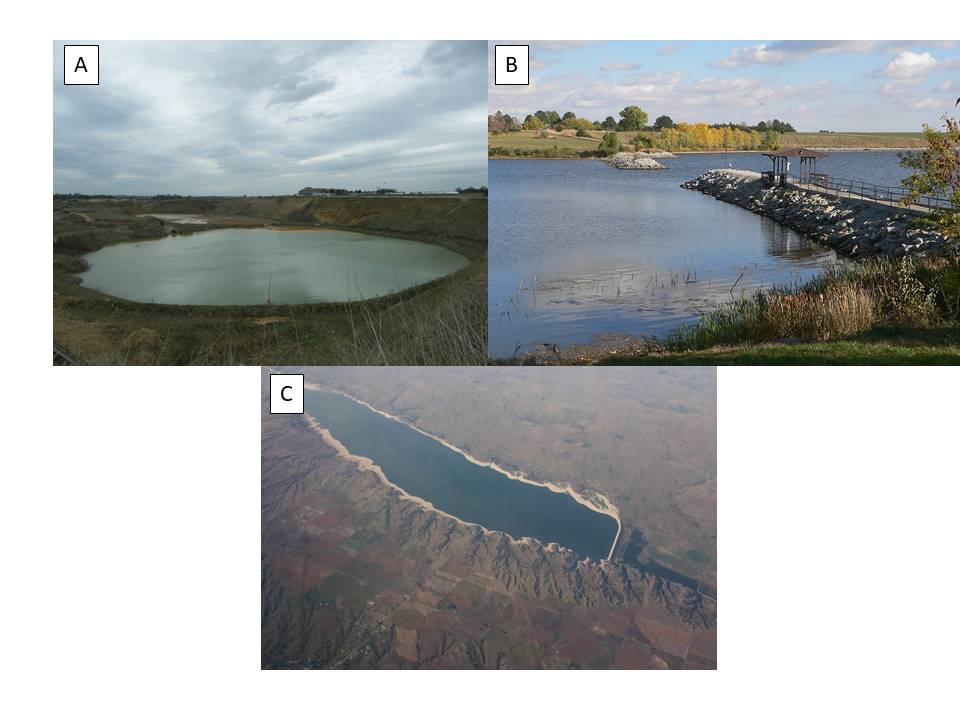
The researchers found that channel catfish growth rates increased as growing seasons lengthened, but the growth rates were not the same across habitat types. Catfish in pit lakes and flood control reservoirs experienced a miniscule bump in growth rates (1-3%), whereas catfish in irrigation and power-generation reservoirs grew much faster (39%). All of the habitat types experienced the effects of climate change because their growing seasons lengthened significantly over the 18 year study (increases from 60-74%).
This study showed that warm-water species like catfish can be impacted by climate change, where longer growing seasons can increase how quickly the fish grow and reach maturity. This has major implications because increased growth rates in fish typically result in better survival and bigger populations. However, species that reside in larger, high volume habitats such as reservoirs may be buffered from dramatic, physiologically harmful changes. The authors suggest that this might explain why catfish that resided in the large irrigation reservoirs got a bigger bump in growth rates than the ones in small pit lakes. These results emphasize the need to account for differences between habitat types when predicting the effects of climate change and managing fish communities. One size doesn’t fit all!
References:
Spurgeon JJ, Pegg MA, Pope KL, and Xie L. 2020. Ecosystem-specific growth responses to climate pattern by a temperate freshwater fish. Ecological Indicators. 112: 106130
Photo credits:
Figure 1: http://www.fws.gov/southwest/fisheries/uvalde/species.htm
Figure 2: O’Malley, A., Enterline, C., and Zydlewski, J. (2017) Size and Age Structure of Anadromous and Landlocked Populations of Rainbow Smelt. North American Journal of Fisheries Management. 37:2. 326-336.
Figure 3:
Pit lake: Richard Williams, geograph.org.uk
Irrigation/power-generation reservoir: Dan Brekke, https://www.flickr.com/photos/infospigot/9969649893
Flood control reservoir: Ammodramus, https://commons.wikimedia.org/wiki/File:Branched_Oak_Lake_marina_breakwall_1.JPG

